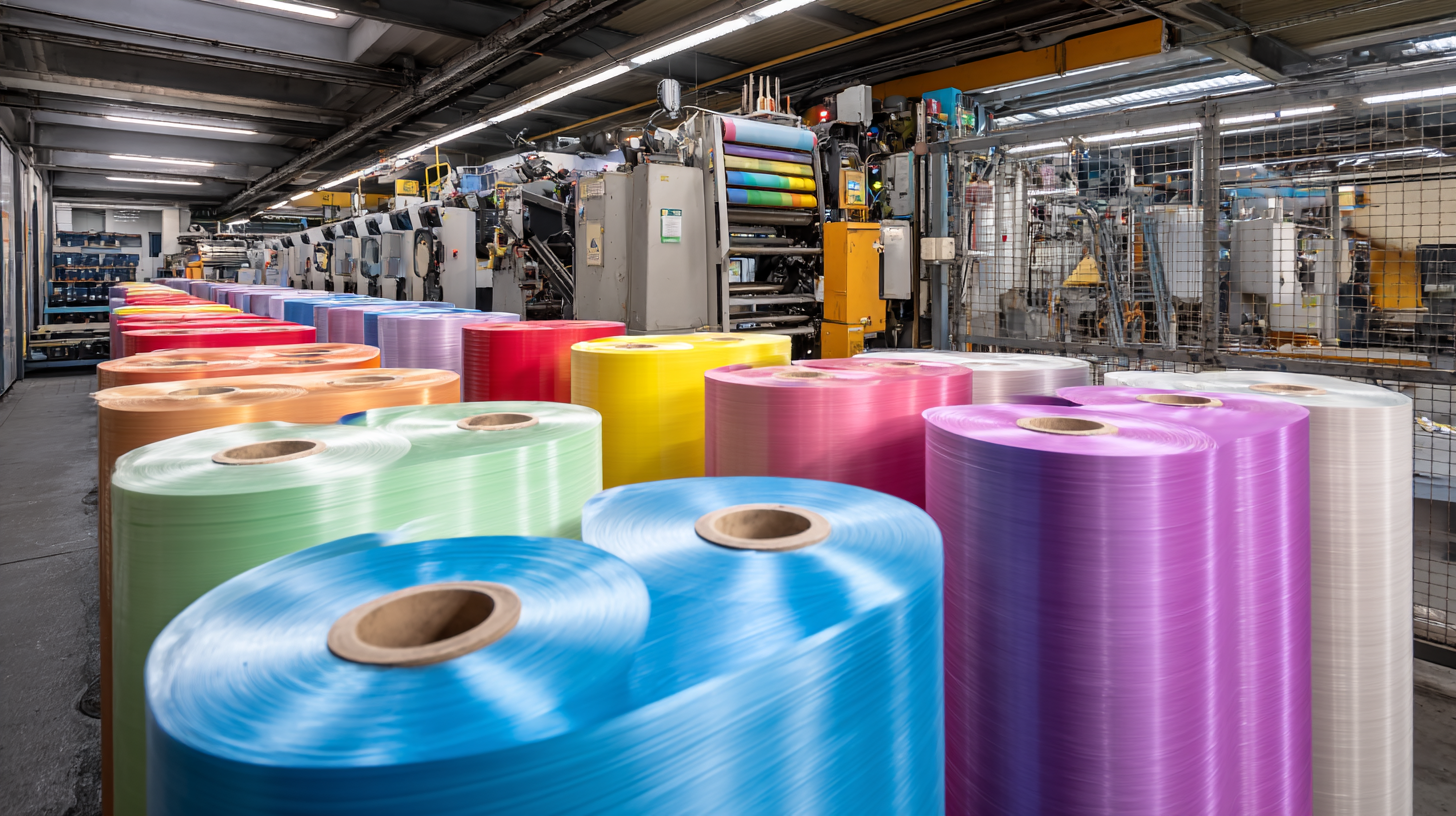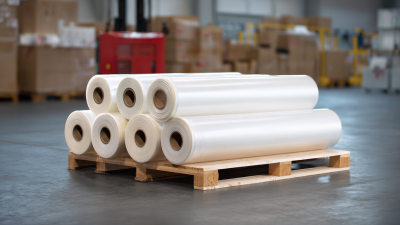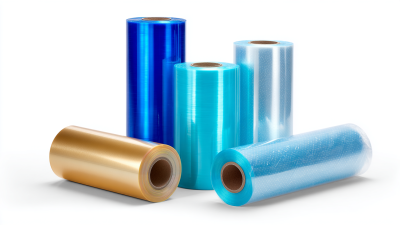 As the global market continues to evolve, the significance of shrink packaging rolls has gained increasing attention. The upcoming 138th China Import and Export Fair in 2025 presents a pivotal opportunity for industry stakeholders to explore emerging trends and innovations within this dynamic segment. Shrink packaging rolls, known for their versatility and efficiency in protecting products, have become a cornerstone in various industries, including food and beverage, electronics, and consumer goods. This fair will not only showcase the latest advancements in shrink packaging technology but will also facilitate valuable exchanges among global suppliers, manufacturers, and potential buyers. By examining market trends, sustainability practices, and consumer preferences, participants can gain insights that will drive their strategic decisions in the ever-competitive landscape of packaging solutions. As we approach this major event, understanding the trajectory of shrink packaging rolls will be crucial for businesses aiming to thrive in 2025 and beyond.
As the global market continues to evolve, the significance of shrink packaging rolls has gained increasing attention. The upcoming 138th China Import and Export Fair in 2025 presents a pivotal opportunity for industry stakeholders to explore emerging trends and innovations within this dynamic segment. Shrink packaging rolls, known for their versatility and efficiency in protecting products, have become a cornerstone in various industries, including food and beverage, electronics, and consumer goods. This fair will not only showcase the latest advancements in shrink packaging technology but will also facilitate valuable exchanges among global suppliers, manufacturers, and potential buyers. By examining market trends, sustainability practices, and consumer preferences, participants can gain insights that will drive their strategic decisions in the ever-competitive landscape of packaging solutions. As we approach this major event, understanding the trajectory of shrink packaging rolls will be crucial for businesses aiming to thrive in 2025 and beyond.
The 2025 China Import and Export Fair presents a pivotal opportunity to assess the trends in the shrink packaging rolls market, particularly against the backdrop of recent shifts in US-China trade relations. Recent agreements to roll back tariffs significantly—US tariffs on Chinese goods dropping from 145% to 30%, and Chinese tariffs on US goods scaling down from 125% to 10%—are expected to enhance trade flows and market accessibility. Analysts anticipate that this dynamic could lead to increased demand for shrink packaging rolls, particularly in consumer goods and industrial applications, where protective and efficient packaging is vital.
In the current climate, companies operating within the shrink packaging sector should consider several strategies to capitalize on these changes.
Tips: Focus on strengthening supply chain logistics to mitigate any production delays stemming from trade dynamics. Additionally, companies should invest in technologies that improve packaging efficiency, as high-quality, cost-effective shrink packaging can significantly enhance product appeal in an increasingly competitive market.
As the fair approaches, it would be prudent for participants in the packaging industry to gather market intelligence and explore partnerships that can solidify their positions in both domestic and international markets. Being proactive during this transformative period can yield significant advantages for businesses poised to meet the evolving demands within the shrink packaging sector.
The shrink packaging industry is undergoing a significant transformation, driven by both innovation and a growing emphasis on sustainability. As manufacturers and consumers become more environmentally conscious, there is an increasing demand for eco-friendly materials in shrink packaging solutions. Companies are exploring biodegradable polymers and recycled materials, combining functionality with a reduced environmental impact. Innovations in this area not only cater to regulatory demands but also appeal to a market that prioritizes sustainability in purchasing decisions.
In addition to material advancements, technological innovations are enhancing the efficiency and effectiveness of shrink packaging. Automation and smart technologies are being integrated into production processes, resulting in faster packaging speeds and reduced waste. Moreover, advancements in shrink film design are enabling better product visibility and protection, which are crucial for consumer satisfaction. As the industry prepares for the global stage of the 2025 China Import and Export Fair, these emerging trends in shrink packaging will likely play a pivotal role in shaping market dynamics and inviting new investment opportunities. Companies that embrace these trends will not only meet current consumer demands but also set themselves apart in an increasingly competitive landscape.
This chart illustrates the projected growth in demand for shrink packaging rolls across various sectors by 2025, highlighting key trends in innovation and sustainability.
 The shrink packaging industry is set to experience significant growth in the coming years, particularly as global market dynamics shift. According to a report by Custom Market Insights, the sustainable pharmaceutical packaging market alone is projected to reach USD 343.01 billion by 2034, exhibiting a compound annual growth rate (CAGR) of 15.13%. This rapid expansion is indicative of the broader trends seen within the flexible packaging market, which is expected to attain a considerable size of USD 488.72 billion by 2034. Such figures underline the important role that shrink packaging will play in various sectors, including pharmaceuticals, food, and consumer goods.
The shrink packaging industry is set to experience significant growth in the coming years, particularly as global market dynamics shift. According to a report by Custom Market Insights, the sustainable pharmaceutical packaging market alone is projected to reach USD 343.01 billion by 2034, exhibiting a compound annual growth rate (CAGR) of 15.13%. This rapid expansion is indicative of the broader trends seen within the flexible packaging market, which is expected to attain a considerable size of USD 488.72 billion by 2034. Such figures underline the important role that shrink packaging will play in various sectors, including pharmaceuticals, food, and consumer goods.
Key players in the shrink packaging industry are adapting their strategies to capitalize on these trends. Companies are increasingly focusing on sustainability and innovative packaging solutions to meet evolving consumer demands. Strategies include investing in eco-friendly materials and technology that enhance packaging efficiency while reducing waste. This shift not only aligns with global sustainability goals but also positions these companies to gain a competitive advantage as the market continues to grow. With a forecasted increase in demand, businesses must harness these insights to navigate the complexities of the global market effectively.
The global dynamics of supply chains significantly influence the shrink packaging rolls market, especially in light of recent trends and technological advancements. A report by Mordor Intelligence highlights that the flexible packaging market, which includes shrink packaging, is projected to grow at a CAGR of approximately 4.3% from 2021 to 2026. This growth is driven by consumer demand for convenience and sustainability, prompting manufacturers to adopt advanced packaging solutions that enhance product shelf life while reducing waste.
Moreover, collaborations such as the one between a global berry producer and a technology firm exemplify the innovative approaches being taken to address supply chain challenges. By employing low-atmosphere vacuum chambers, they aim to extend product freshness throughout the distribution process, showcasing how advancements in packaging technology can mitigate food spoilage and enhance sustainability. As retail consumption continues to evolve, these impacts necessitate a shift in strategies for packaging, logistics, and overall supply chain management, making it essential for companies to stay ahead of market trends.
In the evolving landscape of shrink packaging solutions, consumer preferences are experiencing noteworthy shifts driven by sustainability and functionality. As manufacturers primarily focus on eco-friendly materials and innovative designs, consumers are increasingly drawn to products that not only meet their functional needs but also align with their environmental values. This change in consumer behavior reflects a growing awareness of the environmental impacts of packaging waste, prompting brands to adapt their shrink wrap offerings to incorporate recyclable and biodegradable materials.

Additionally, the demand for customization in shrink packaging is on the rise. Consumers today expect packaging that is not only protective but also visually appealing and brand-specific. This trend is fueled by the burgeoning e-commerce market, where first impressions count, and packaging serves as a critical touchpoint between the consumer and the brand. As a result, businesses are investing more in tailored shrink packaging solutions that resonate with the modern consumer, ultimately enhancing customer experience and driving brand loyalty.






